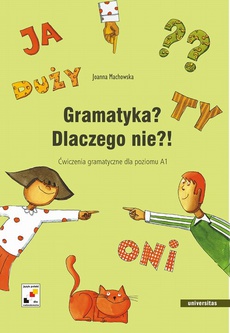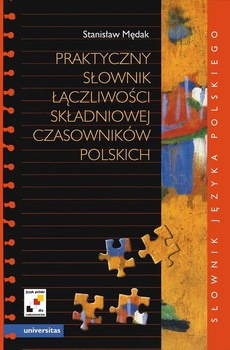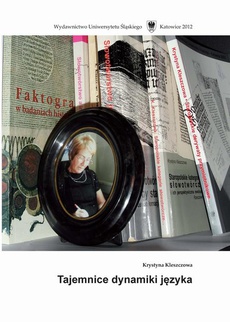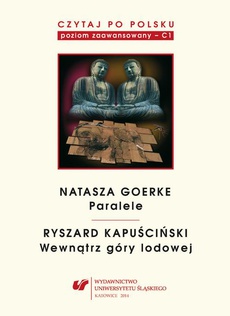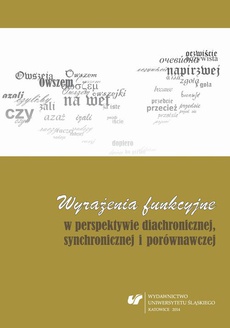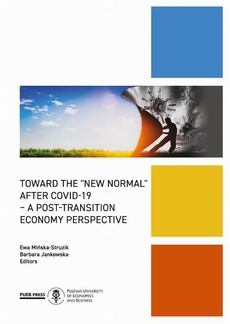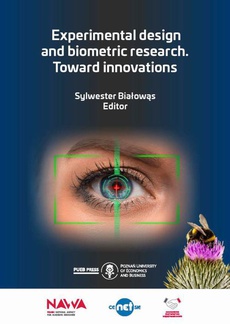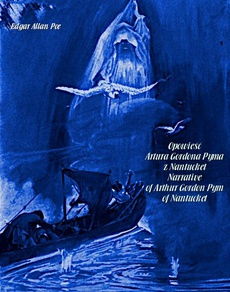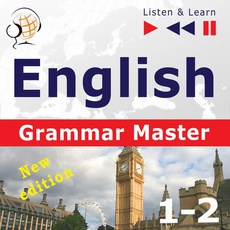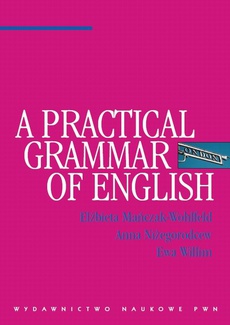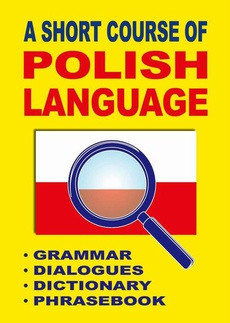POLECAMY
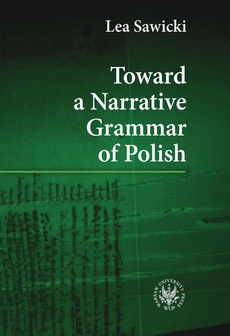
-40%
Toward a Narrative Grammar of Polish
Autor:
Wydawca:
Format:
pdf, ibuk
Studium elementów gramatyki narratywnej w popularnonaukowych opowiadaniach Stanisława Lema Opowieści o pilocie Pirxie. Zawiera wnikliwą i nowatorską analizę podstawowych środków gramatycznych języka polskiego używanych w budowie tekstu narracyjnego i określających zjawiska tekstualne związane z odbiorem anatomii opowiadania przez czytelnika.
Analiza została przeprowadzona w formie zazębiających się badań nad zasobem wykładników gramatycznej budowy tekstu, przyczyniających się do powstania spójnego, wielowarstwowego i bogatego pod względem artystycznym tekstu narracyjnego, takich jak: czas, aspekt, schematy składniowe, współrzędność i podrzędność składniowa, partykuły i spójniki oraz szyk zdania. Wielopłaszczyznowe ujęcie ukazuje wzajemne oddziaływanie literackich i językowych elementów, tworząc obraz sztuki narracyjnej Stanisława Lema i zarazem obraz struktury językowej polszczyzny.
| Rok wydania | 2008 |
|---|---|
| Liczba stron | 178 |
| Kategoria | Gramatyka języka polskiego |
| Wydawca | Uniwersytet Warszawski |
| ISBN-13 | 978-83-235-1226-4 |
| Numer wydania | 1 |
| Język publikacji | angielski |
| Informacja o sprzedawcy | ePWN sp. z o.o. |
Ciekawe propozycje
Spis treści
| Foreword | 9 |
| Chapter One: Introduction | 11 |
| Chapter Two: The structure of a story: analysis of the running text | 15 |
| Chapter Three: Textual units: patterns and boundary signals | 51 |
| 1. Text segments | 51 |
| 2. Initial sentences | 56 |
| 3. Settings | 58 |
| 3.1. Local settings | 58 |
| 3.2. Temporal settings | 59 |
| 4. Theme maintenance vs. theme shift-61 | |
| 5. Flashbacks | 64 |
| 6. Digressions | 65 |
| 7. Secondary narrative | 67 |
| 8. Conclusions | 68 |
| Chapter Four: Participants and Narrator | 69 |
| 1. Participants | 69 |
| 2. Pirx as participant: narrator or focalizor? | 70 |
| 3. Non-characters | 76 |
| 4. Conclusions | 79 |
| Chapter Five: Principal means of text structuring | 81 |
| 1. Introductory remarks | 81 |
| 2. Grounding-81 | |
| 3. Aspect | 83 |
| 3.1. Aspect and 'event sequencing' | 84 |
| 3.2. Non-plot-advancing segments: aspect and other features | 87 |
| 3.3. Imperfective aspect as participant characterization | 89 |
| 3.4. Imperfective in non-descriptive segements | 90 |
| 3.5. Imperfective as 'off-plane event sequencer' | 91 |
| 4. Tense | 94 |
| 4.1. The past as unmarked narrative tense | 94 |
| 4.2. Temporal adverbs in narrative | 95 |
| 4.3. The present tense in narrative | 96 |
| 4.4. A periphrastic 'prospective' narrative tense | 100 |
| 4.5. Tense in subordinate clauses | 101 |
| 4.6. Tense-switching | 101 |
| 5. Subordinate clauses and grounding | 102 |
| 5.1. 'When' – clauses in narrative | 102 |
| 5.2. Content clauses in narrative | 104 |
| 5.3. Relative clauses in narrative | 105 |
| 5.4. Other subordinate clauses in narrative | 106 |
| 6. Recapitulative abstract substantives | 107 |
| 7. Conclusions | 109 |
| Chapter Six: Linkage | 110 |
| 1. Coordination of predications | 110 |
| 2. Connecting particles | 111 |
| 3. The particle a | 112 |
| 3.1. The particle a as a marker of juxtaposition of the content of two predications | 112 |
| 3.2. Parallel statements connected by a | 115 |
| 3.3. Commentative parenthetic clauses with a | 116 |
| 3.4. The particle a in monologue and dialogue text segments | 117 |
| 3.5. The particle a with więc | 118 |
| 4. The particle i | 119 |
| 4.1. The particle i connecting logically ordered predications with a common subject | 119 |
| 4.1.1. The particle i in coordinated perfective clauses | 119 |
| 4.1.2. Clauses coordinated by the particle i with non-durative, iterative imperfectives | 120 |
| 4.1.3. Clauses coordinated by the particle i with durative, non-iterative imperfectives | 121 |
| 4.1.4. The particle i connecting logically ordered predications with different subjects | 123 |
| 4.2. The particle i as a highlighting particle | 125 |
| 4.2.1. The particle i marking a turning point in the narrative | 125 |
| 4.2.2. The particle i as a focus marker | 126 |
| 5. Adversative particles: ale | 127 |
| 5.1. Unsuccessful or unfulfilled actions, failed attempts | 127 |
| 5.2. Unexpected outcomes | 129 |
| 5.3. The particle ale in clauses following expressions of states of affairs | 130 |
| 5.4. The particle ale in sentences with evaluative stance | 131 |
| 5.5. The particle ale in dialogue | 132 |
| 5.6. The particle ale in free indirect discourse | 134 |
| 5.7. The particle ale in clauses marking a narrative break | 136 |
| 5.8. The particle ale as a focus marker | 137 |
| 6. Coordination of sentence constituents | 138 |
| 7. Summary and conclusions | 139 |
| Chapter Seven: Constituent sequencing | 145 |
| 1. Introductory remarks | 145 |
| 1.1. Working definitions | 145 |
| 1.1.1. Theme and rheme | 145 |
| 1.1.2. Subject and Predicate | 147 |
| 1.1.3. Agent | 148 |
| 2. Constituent sequencing in verbal sentences | 148 |
| 2.1. Basic word order in Polish? | 148 |
| 2.2. The occurrence of the pronominal subject | 149 |
| 2.3. The position of the subject | 152 |
| 2.3.1. The position of the subject with verbs of weak predication | 152 |
| 2.3.2. The position of the subject with verbs of speech | 154 |
| 2.3.3. Expanded subjects of verbal and non-verbal sentences | 157 |
| 2.4. Constituent sequencing in digression closing | 158 |
| 2.5. Constituent sequencing in presets | 159 |
| 3. Distribution of information in nominal sentences | 162 |
| 3.1. The sequence of to and być | 166 |
| 3.2. A note on number/gender congruence in the nominal sentence | 172 |
| 4. Conclusions | 172 |
| References | 174 |






